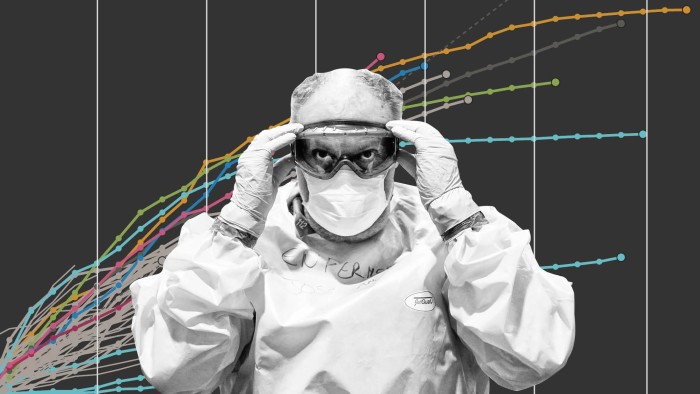Singapore struggles to slash coronavirus infections | Free to read

Roula Khalaf, Editor of the FT, selects her favourite stories in this weekly newsletter.
Singapore has reported another surge in coronavirus cases, a day after overtaking Japan to become the Asian country with the third-highest number of infections.
The city-state recorded 799 new cases on Monday, taking its total to 14,423 and putting it behind only China and India in terms of the total number of infections. The number of coronavirus patients reported in Singapore has climbed almost fivefold in the past two weeks, as the city-state ramped up testing.
The sharp increase in a country that won plaudits for seemingly keeping the pathogen under control has highlighted the difficulty in fighting the disease.
Critics say it has also laid bare the poor living conditions of Singapore’s vast migrant worker population, who reside in crowded dormitories where the largest cluster of cases has been found. Foreign workers, mostly from countries including India, Bangladesh and China, account for almost three-quarters of Singapore’s coronavirus cases.
Authorities have isolated at least 20 dormitories, where individuals are not allowed to leave their rooms for two weeks.
In his most recent national address, Lee Hsien Loong, prime minister, last week said that while most infected migrant workers showed mild symptoms, the transmission of the disease in dormitories remained “a serious problem”.
The spread of Covid-19 among migrant workers and the cases with no links to previously recorded infections forced Mr Lee to extend Singapore’s month-long near total lockdown by four weeks, until June 1.

Some medical experts suggest transmissions in Singapore could be higher than the reported numbers because not all migrant workers with Covid-19 symptoms are tested.
“The positivity rate of the tests is so high you get to the point where you don’t need to test any more. If you have a clinical respiratory illness then you most certainly have [Covid-19], so we put those people into isolation straightaway,” Dale Fisher, professor of infectious diseases at the National University of Singapore, told local media at the weekend. He added that the aim was to eventually include these migrant workers in the overall numbers.
The health ministry said it had tested aggressively in dormitories, examining about one in 15 workers. It added that while it was unable to test everyone in dormitories at once, it “immediately” isolated those who were ill or with coronavirus symptoms.
Prof Fisher, who is involved in Singapore’s coronavirus response, said the isolation facilities represented a “chokepoint”, with hospitals unable to transfer patients there as these structures are at capacity. The city-state, which counts about 5,000 beds in these facilities, aims to double that number in the next fortnight and to reach 20,000 beds in the next month or two, he added.
Editor’s note

The Financial Times is making key coronavirus coverage free to read to help everyone stay informed. Find the latest here.
The Singapore Expo and the Changi Exhibition Centre are among the buildings authorities have converted into community isolation facilities.
“The Covid-19 pandemic has forced us to improvise and come up with innovative, workable solutions on the ground,” Mr Lee said in a Facebook post.
In response to the outbreak, the government has moved about 10,000 healthy migrant workers out of dormitories and deployed teams to help deliver meals and medical support at dormitories.
All workers staying in dormitories have stopped going to work “to minimise the risk of transmission”, the manpower ministry said.
Comments